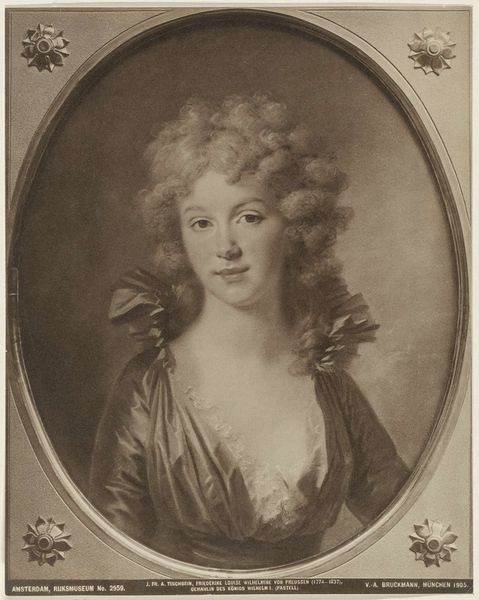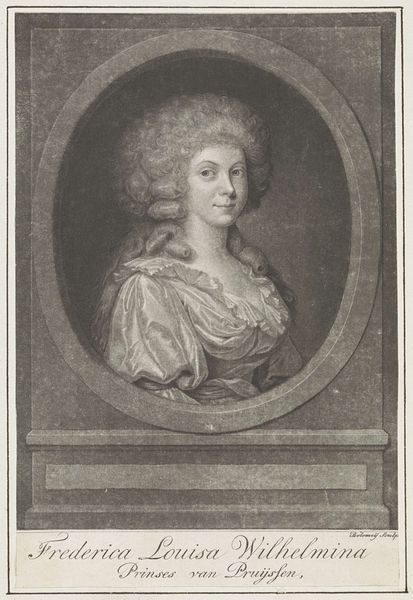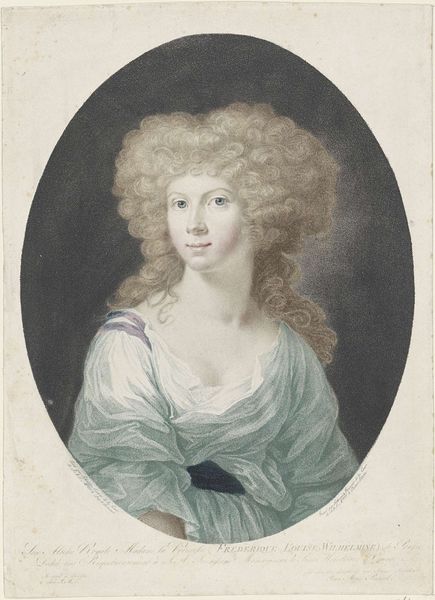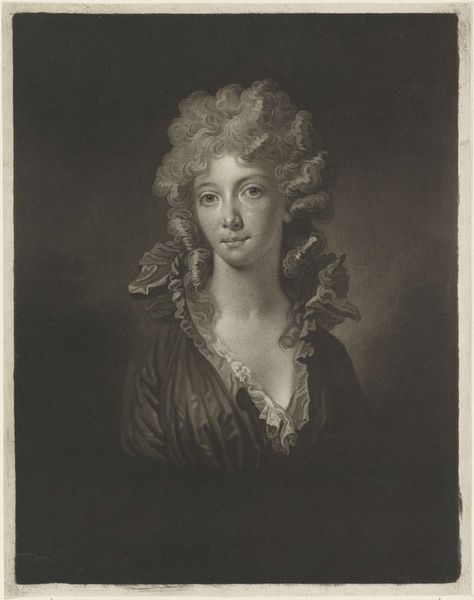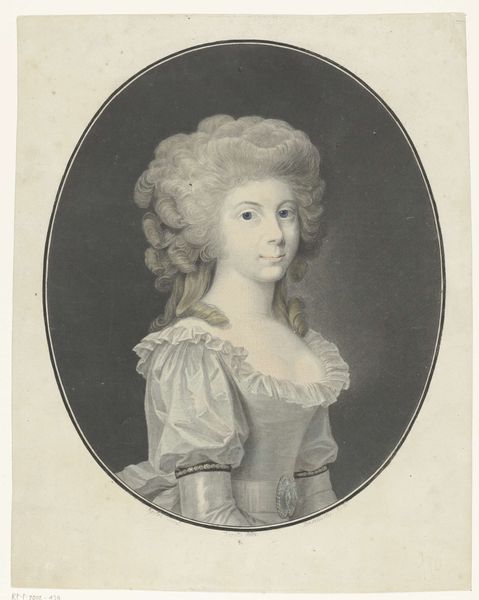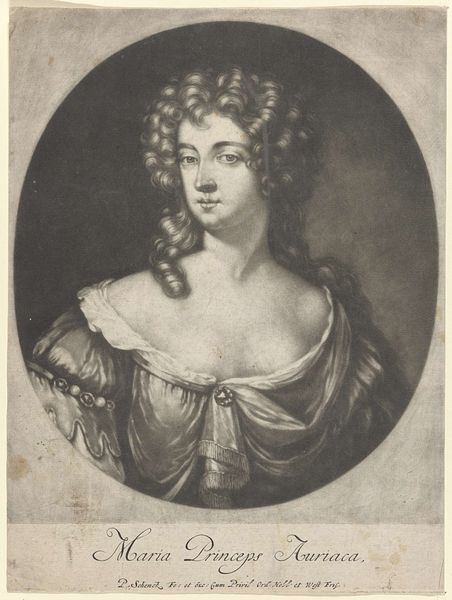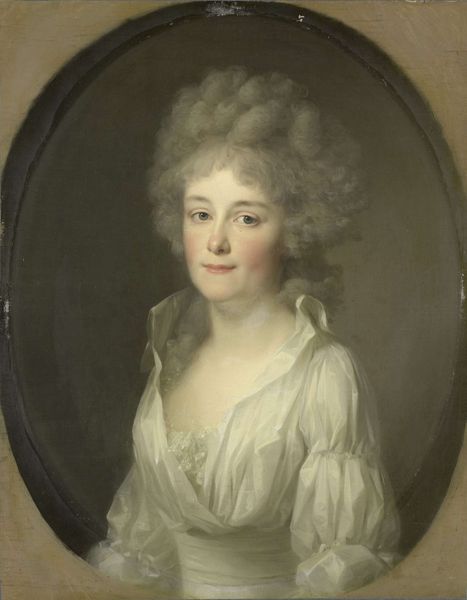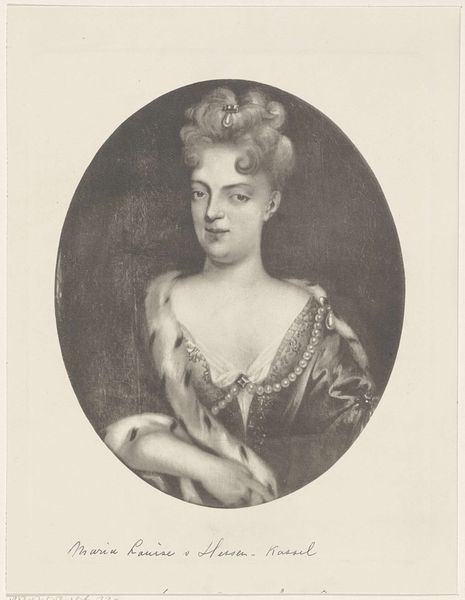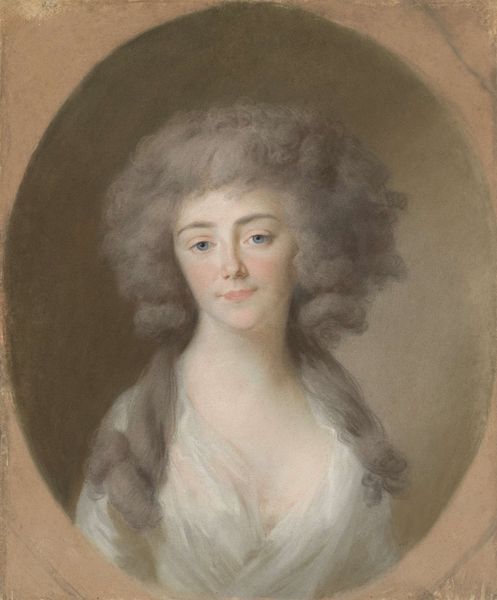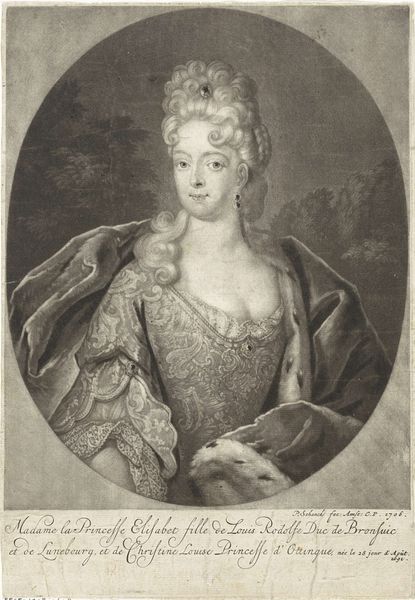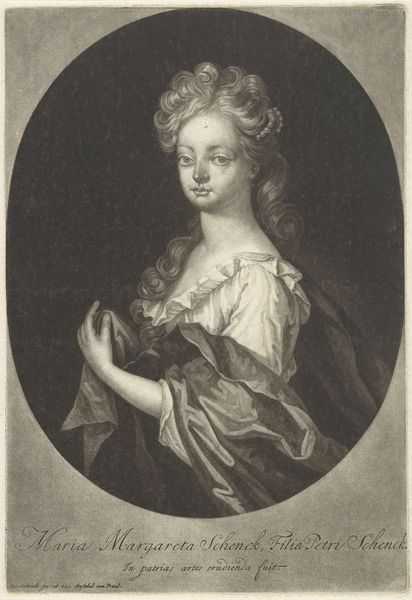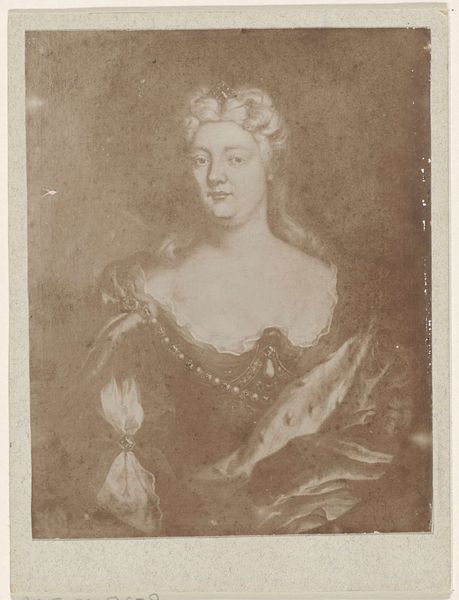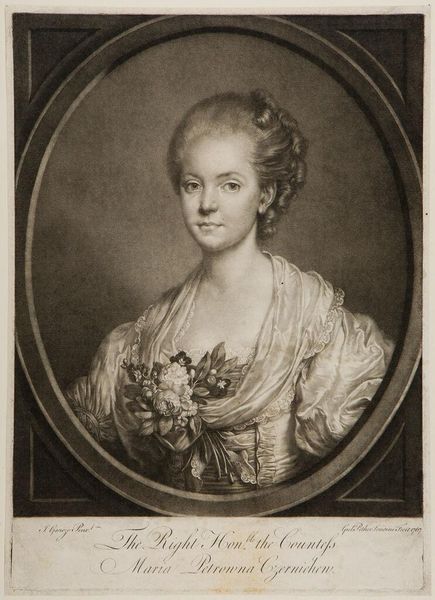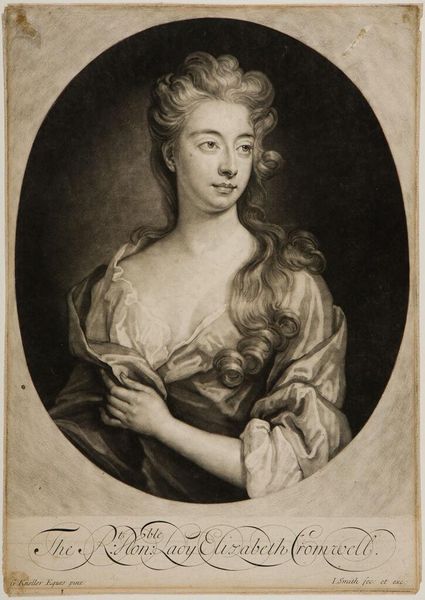
print, photography, gelatin-silver-print
#
portrait
#
pictorialism
# print
#
photography
#
gelatin-silver-print
Dimensions: height 278 mm, width 218 mm
Copyright: Rijks Museum: Open Domain
Curator: Here we have a photograph entitled "Portret van Wilhelmina van Pruisen," dating back to 1904. The piece, currently housed in the Rijksmuseum, is a gelatin silver print. Editor: It possesses an almost dreamlike quality, a softness that belies the rigidity one often associates with historical portraiture. The frame itself feels very elaborate; it encloses Wilhelmina but also serves as a form of confinement. Curator: Indeed. As a pictorialist photograph, it aimed for artistic effect over pure documentation. Think about Wilhelmina’s position within the Prussian court – photography here serves to construct and disseminate an image of royal femininity. Editor: I find it interesting that a photographic print mimics a painting. It emphasizes the constructed nature of the portrait but simultaneously elevates photography to fine art by replicating a known portrait, which perhaps originally started out as a drawing. Considering that it’s a gelatin silver print—what do you think about its consumption within the Duchy, at the time? Curator: Well, photography was rapidly changing representational practices across Europe and Prussia at the time, creating opportunities for both greater access to portraiture, but also allowing those in power, to further dictate its dissemination for sociopolitical gain. Its relative cheapness allowed access but did it break barriers for lower class, lower income folks? I think there's an avenue for interrogation there. Editor: The way she's posed, so serene, speaks volumes about the expected composure and presentation of women in power. It feels like she's positioned within a lineage of noble female figures. It does speak to that kind of… restricted material environment for people. Gelatin silver prints were the affordable thing at that moment. The mode of reproduction allows for that broad dissemination you discussed but the mode of photography here is an important aspect that also underscores the context of wealth and status this represents. Curator: It highlights that constant tension between representation, accessibility, and the inherent politics embedded in both photographic technology and the very act of portraying Wilhelmina. Editor: Right. It also feels strangely contemporary even now, it reflects ongoing conversations about image, gender and power. Curator: Absolutely, making it relevant in today’s context of constructed personas on social media as well. Thank you for sharing your perspective. Editor: And thank you, as always, for providing such a wealth of historical context.
Comments
No comments
Be the first to comment and join the conversation on the ultimate creative platform.
